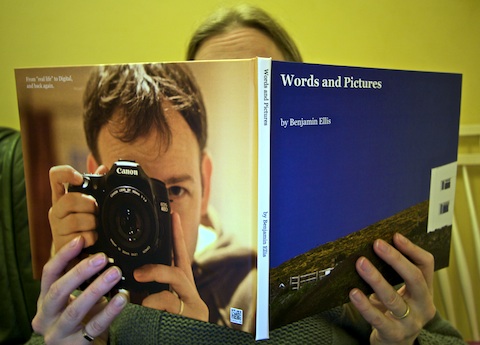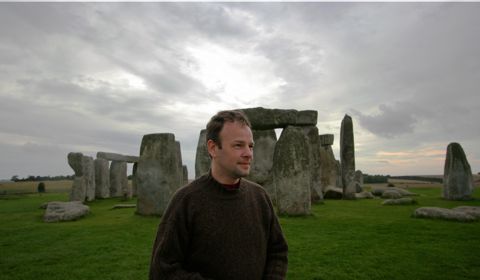Creating Valuable Artefacts
Artefacts – things left behind by ancient civilisations. Tangible items that remain, things that you can see and hold, that give a sense of history.
“Create valuable artefacts.”
I’m not sure where the phrase originated, but it is one that has stuck with me for many years. It might have come from a conversation with a developer, in talking about coding methodologies, but the application goes far beyond programming. When you have a discussion, write some code, or hold an event: create valuable artefacts.
Artefacts aren’t just markers, like Stonehenge, pictured above. Valuable artefacts enable others to benefit from your thinking, and build on it. It took three phases and hundreds of people, over hundreds of years, to create Stonehenge. Conversations are transitory and private, confined to a moment in time and a small group of people, but artefacts are persistent and discoverable.
When artefacts express knowledge, it can be transferred to others. For me, books are still the ultimate knowledge artefact. There is something Information, organised, presented and committed on to organic matter.
Books still hold a special place in our society, even in this age of social media and user generated content. Perhaps it is because there is still a high barrier to creating a book. It is traditionally a long process, costly in both time and money, to get something in to print. Or perhaps it is because the format is associated with deep memories, right back to our childhood days. Either way, there is something unique about a book.
Thanks to Blurb, and the London Underground blog, I had the opportunity to publish my own book. For those that don’t know me, I have had lots of articles published (and I’m open to commissions!). I have contributed chapters to books, too. However, the experience of producing my own book was something quite different. Simultaneously daunting and exciting.
Technically, the process was straight forward. Download and install the Blurb software, Mac or PC, then drop in the images and text, and choose a layout. Tweak as necessary, and submit to publish. The difference was the emotional aspect of the production. Owning the creative process from start to finish. Even though my idea was a simple one – make use of my photography, and posts from this blog – it was still a daunting prospect putting it together.
Then, just a couple of weeks later, an unexpected birthday present arrived at the door step (purely by coincidence of timing)…

A book, beautifully bound, with 40 pages of pictures and words, on premium paper. In my hands, or actually in Caalie’s hands in the picture. It was a strange experience, holding a physical object, based on some of the digital media I have produced over the last few years. Then watching others thumb through it too. I don’t normally get to see people digesting my work.
It’s impact is hard to put in words, but it has spawned lots of ideas. I will publish a public book later in the year, since enough people have asked about buying copies of this one, but the technology has other applications too. Blurb opens the option of publishing a book to the masses.
Will everyone become an author? I’m not sure they will. Even if blogging is building the skills for some, not everyone is comfortable with writing ‘in public’ – a fact I’m very aware of when deploying wikis or helping businesses to blog.
One of the things about traditional book publishing is that it is a process – for better or for worse. Pitching an idea, writing a draft, editing and a whole set of other activities. It is a process, and a creative one at that. Having the right process for creating artefacts improves their quality, although care has to be taken not to stifle that creativity.
Much of the work in and around technology companies is a creative process, but people are not always aware of that. Ask staff if they are creative, and they will generally say they aren’t. It’s fun when you are able to evidence that they actually are.
Blurb enables the publication of short-form works, right down to 40 pages or even less, with mixtures of wonderfully printed pictures and words. I’m going to hunt out an opportunity to use Blurb to create a book as a project artefact. Something drawn from the materials of a project team – photos, wiki pages and blog posts – and given to each team member. Something to keep at their desk as a record of what they achieved.
That’s another thing with creating valuable artefacts, they provide physical evidence of your hard labour. Something that is increasingly rare in the information age.



Benjamin,
I have the same feeling towards artefacts — the process of creating is great, but it’s hard to beat having a tangible, end-result you can be proud of, isn’ it?
Congratulations for entering the artefact-maker team! 🙂
All the best.
Thank you, Luciano! I enjoyed your post on e-prime – quite a challenging system, and a good nudge for me to write up a couple of pieces on Cognitive Biases and critical thinking.
I am in the process of developing several books that I plan to get professionally printed. Even though they are all personal books I want them to feel great. The books will include different types of content and I keep changing my mind on how I should produce them, so it is good to hear that you are pleased with Blurb.
I’m typing up my blog posts and diary entries and I’m currently doing them in Word to be printed by Lulu. I also want to put together two books for my daughter showing her scan pictures, welcome cards etc and how she changes in her first year and I’m not sure whether I should use Blurb, photobook software like fotobook or lulu.
One of the challenges in going from a blog to a book is formatting, so it is worth checking how the service or software the handles importing of HTML.
Book layout and typography are very specialist skills, and part of the requirement in choosing a service is to make sure that it hides those issues (or helps with them). For some that will mean templates, for others that will mean expert tools.